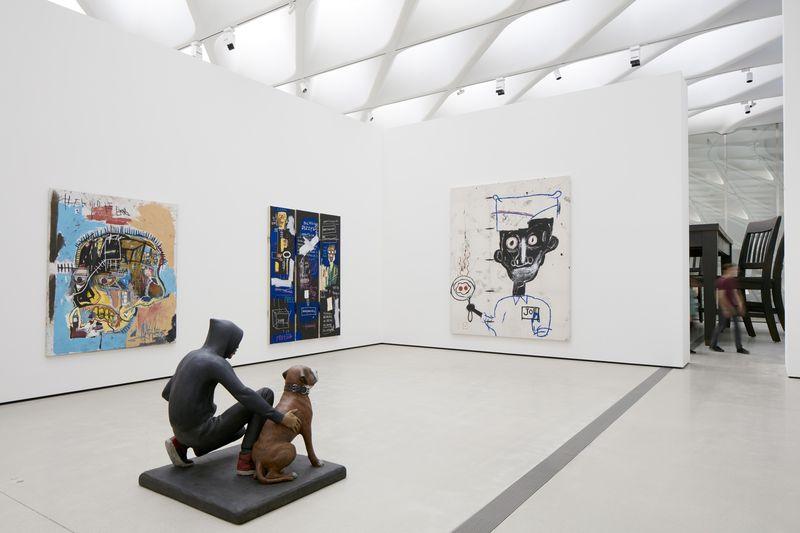LA’s newest museum is a palace for modern art
The exterior of the new Broad Museum in Los Angeles.
The $140 million dollar Broad Museum, which opened last month in downtown Los Angeles, is a massive, shiny, metallic and graceful polyhedron. It's like a sibling to Frank Gehry’s Disney Concert Hall, which faces it across the street.

For the past few months, the staff has been moving Eli and Edythe Broad's vast collection of contemporary art into the new building — works by more than 100 artists, including Jean-Michel Basquiat, Jeff Koons, Cindy Sherman and Robert Rauschenberg.
Packing, loading, moving, unloading and hanging priceless artwork from The Broad’s former Santa Monica facility, from storage or from other museums where pieces from The Broad’s collection have been on loan is a nerve-racking business.
Julia Latane, the head preparator at The Broad, was one of the main people overseeing the transfer of nearly 2,000 pieces of art to the new museum. It was up to her to make sure the works arrived safely and went up on the walls correctly — and to make sure they don’t come down again of their own accord.
“Unlike works that you would hang in your house, we tend to not use picture wire,” Latane explains. “We hang directly onto hooks on the wall. We also have different types of security hardware so that the work can't fall in an earthquake or be lifted off the wall without the help of someone who is trained to do it.”

Artist preparator Joe Ray is one of the many people who assisted Latane with this very delicate job and had to manage the stress of knowing one slip could potentially cost the museum dearly. He has already become intimately familiar with the new facility. “There have been times when I could walk up to a wall and touch the exact center, only because I've probably done it, like, 10,000 times,” he says.
Joanne Heyler, the founding director of The Broad, compares the building to a 36,000-ton newborn baby. Heyler is overseeing the installation of the museum’s inaugural exhibition, a chronologically arranged selection of highlights of The Broad collection.
She has been working on the exhibition for more than two years, shifting stamp-sized reproductions of paintings around a dollhouse-scale model of the building’s exhibition spaces. “One of the great things about this installation is seeing all these very familiar artworks that have been in the collection for a long time under this amazing, glowing, natural light. We have a whole future ahead of us as a museum.”

This article is based on a story that aired on PRI's Studio 360 with Kurt Andersen.
